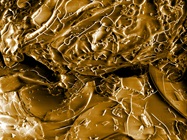
Scanning probe microscopy is a technique used to produce images of a sample's surface. Chemistry and biology laboratories use scanning probe microscopy to analyze samples as diverse as DNA and chromosomes to ceramics and silicon wafers. Industrial labs use scanning probe microscopy in research and development, as well as analysis. There are three main types of scanning probe microscopy, each using a different type of probe.
First is atomic force microscopy, which uses the interaction between the tip and sample surface to create an image. Next, is the scanning tunneling microscopy, which holds the tip a small distance from the surface and measures the weak electric current that moves between them, which is used to form the image of the sample's surface. Finally, there is near field scanning optical microscopy. This has a light source very near the surface of the sample and the light energy from the surface is used to create the image.
Considerations for purchasing a scanning probe microscopy system
The type of scanning probe microscopy equipment that is right for your needs depends on what type of samples you are using. For instance, your sample must be capable of conducting electricity if you are trying to create an image using scanning tunneling microscopy. You also need to determine if the equipment needs to work only in air or in a liquid reaction vessel as well. Resolution capabilities can also vary from one microscope to another.
Discover and compare scanning probe microscopy solutions from various manufacturers: